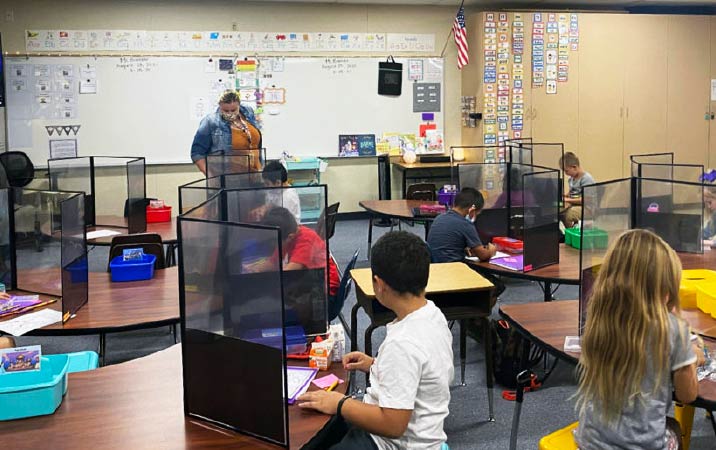The choice of in-person versus remote learning has important implications. About 42 percent of rural school districts in the US offered fully in-person instruction as of February, compared with only 17 percent for urban districts, according to a new RAND Corporation survey of school district leaders.
The opposite pattern held for fully remote learning: 29 percent of urban districts offered fully remote instruction compared with 10 percent of rural districts and 18 percent of suburban districts.
Over a third of all US school districts offering some form of remote instruction in early 2021 had shortened the school day, and a quarter had reduced instructional minutes.
“This survey shows how the choice of remote instruction has ramifications that extend beyond longstanding concerns about the lower quality of remote instruction.,” said Heather Schwartz, lead author of the report and director of the Pre-K to 12 educational systems program at RAND, a nonprofit research organization. “Rural districts – which were primarily fully in-person or hybrid – did not decrease instructional minutes as often as urban districts, which means that urban students of color have likely lost more instructional time this school year than their white counterparts in rural districts.”
To offset pandemic learning challenges, many districts added services. More than half of districts overall, and about seven in 10 urban districts, offered tutoring in 2020-2021 and increased social and emotional learning minutes or programming.
The survey found that about eight in 10 districts have not cut spending in 2020-2021, and most foresee spending the same or more next academic year. Similarly, many more districts have hired rather than fired school staff this academic year, and the prospect for next year looks the same.
Two-thirds of districts lost some enrollment this academic year from the year before, with an average decline of 5 percent. This is twice as many districts, and twice as large a decline, as the year before.
Looking forward, district leaders have great concern about a shortage of substitute teachers, bus drivers and teachers in several historically difficult-to-staff subject areas for 2021-2022.
RAND fielded the survey to the American School District Panel (ASDP) Jan. 21 through March 5. The report is based on responses from 434 district leaders from 48 states and the District of Columbia.
The ASDP is the first-of-its-kind nationally representative, the longitudinal panel of school districts across the U.S., providing opportunities for district and charter management organization leaders to inform policy and practice.
The other authors of “Urban and Rural Districts Show a Strong Divide During the COVID-19 Pandemic: Results from the Second American School District Panel Survey” are Melissa Kay Diliberti, Lisa Berdie, David Grant, Gerald P. Hunter and Claude Messan Setodji.
RAND Education and Labor, a division of RAND, is dedicated to improving education and expanding economic opportunities for all through research and analysis. Its researchers address key policy issues in US and international education systems and labor markets, from pre-kindergarten to retirement planning.
